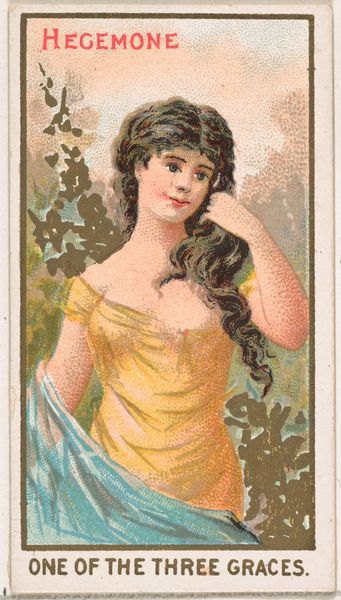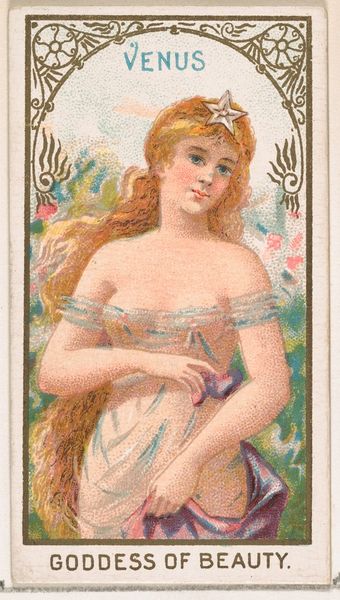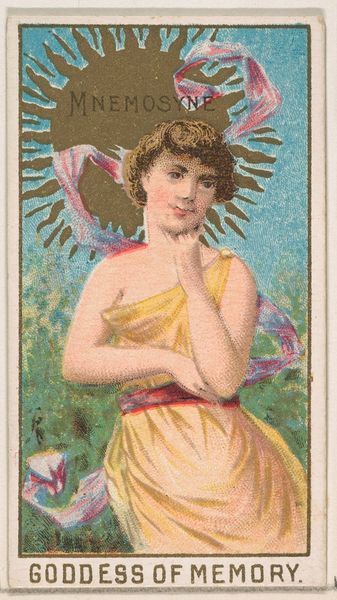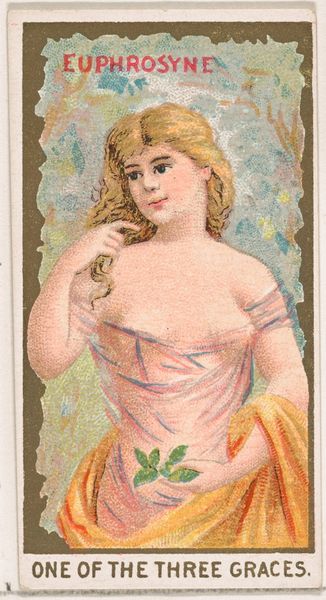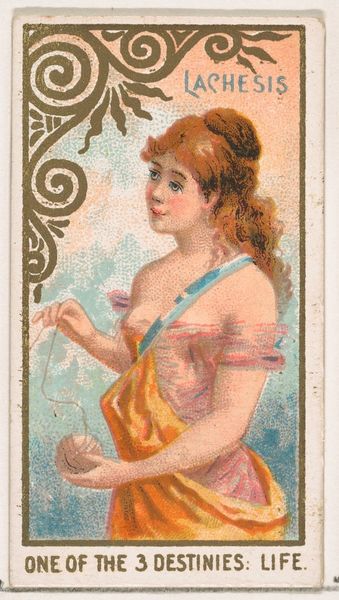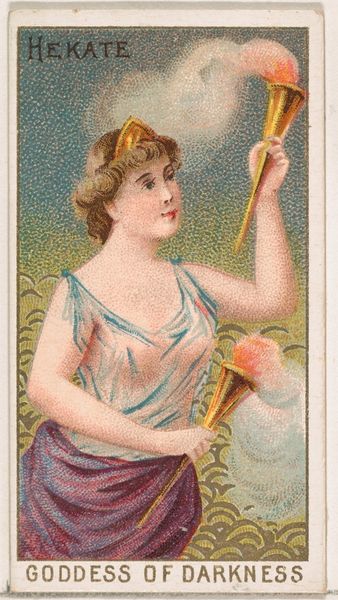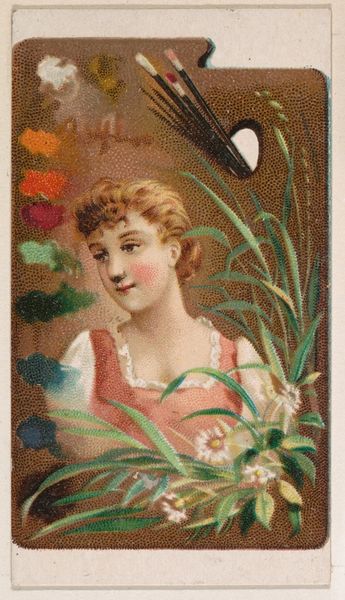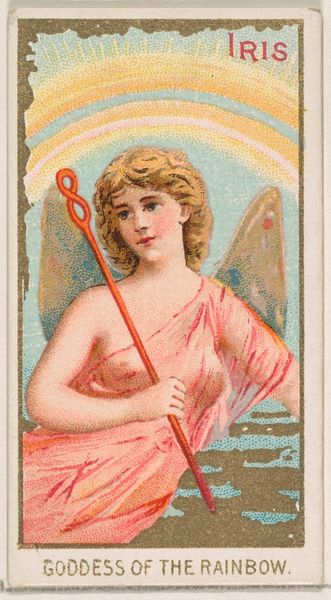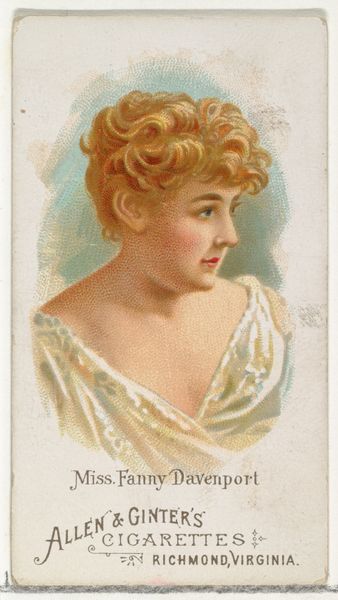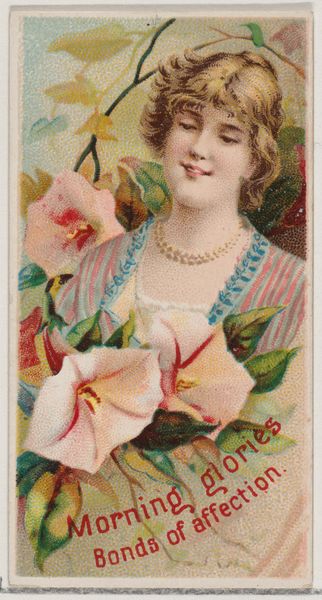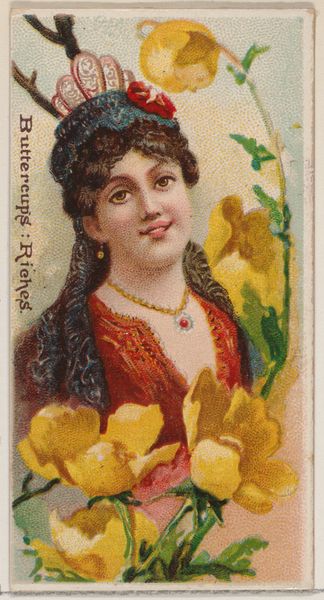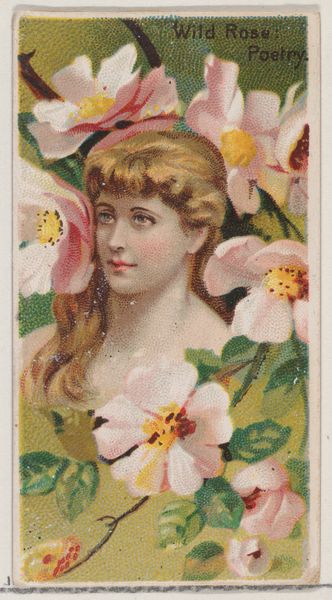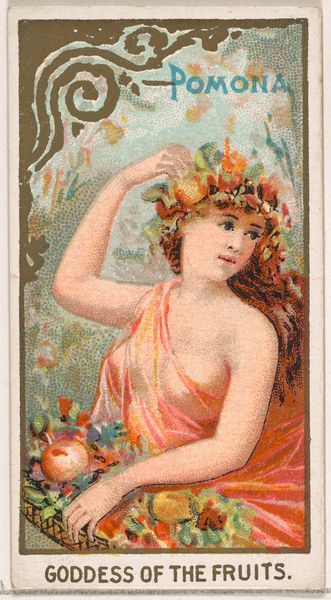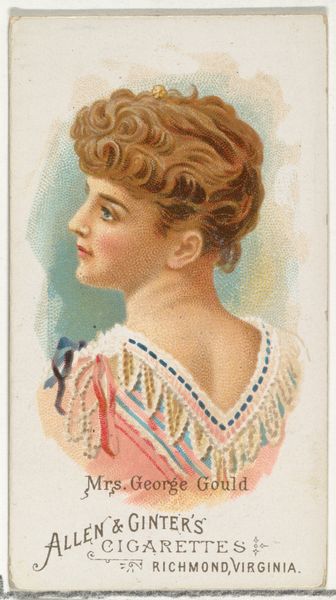
Aglaia, One of the Three Graces, from the Goddesses of the Greeks and Romans series (N188) issued by Wm. S. Kimball & Co. 1889
0:00
0:00
drawing, print
#
portrait
#
drawing
# print
#
figuration
#
academic-art
Dimensions: Sheet: 2 3/4 × 1 1/2 in. (7 × 3.8 cm)
Copyright: Public Domain
This is "Aglaia, One of the Three Graces," a chromolithograph card made by Wm. S. Kimball & Co. Aglaia, often depicted with her sisters Euphrosyne and Thalia, embodies beauty, splendor, and adornment. Her presence here is not merely aesthetic; it is a cultural echo. The Graces symbolize the gifts of nature and the refinements of civilization. Their appearance throughout history, from ancient Greek sculpture to Renaissance painting, speaks to a deep-seated human desire for harmony and beauty. Consider the red drapery she holds, a recurring motif across cultures, signaling status, power, and even sacrifice. Think of its echoes in Renaissance portraits and religious paintings where the Virgin Mary is depicted in a red cloak, signifying divine love. This is how symbols are never static. They appear, transform, and reappear, weaving a complex web of meaning across time. Our collective subconscious recognizes these symbols and the emotions attached to them on a non-linear, cyclical journey.
Comments
No comments
Be the first to comment and join the conversation on the ultimate creative platform.
